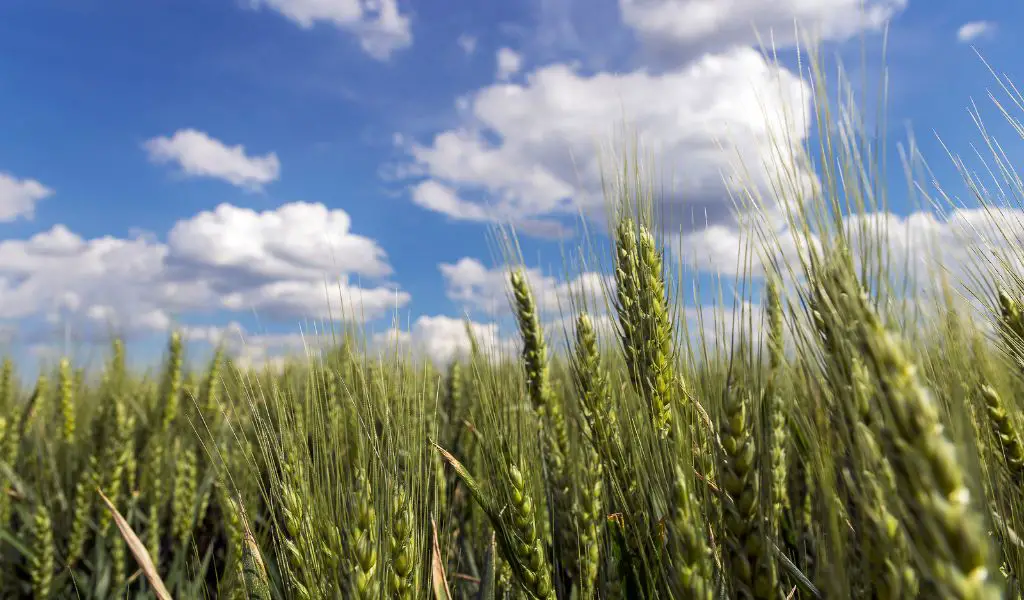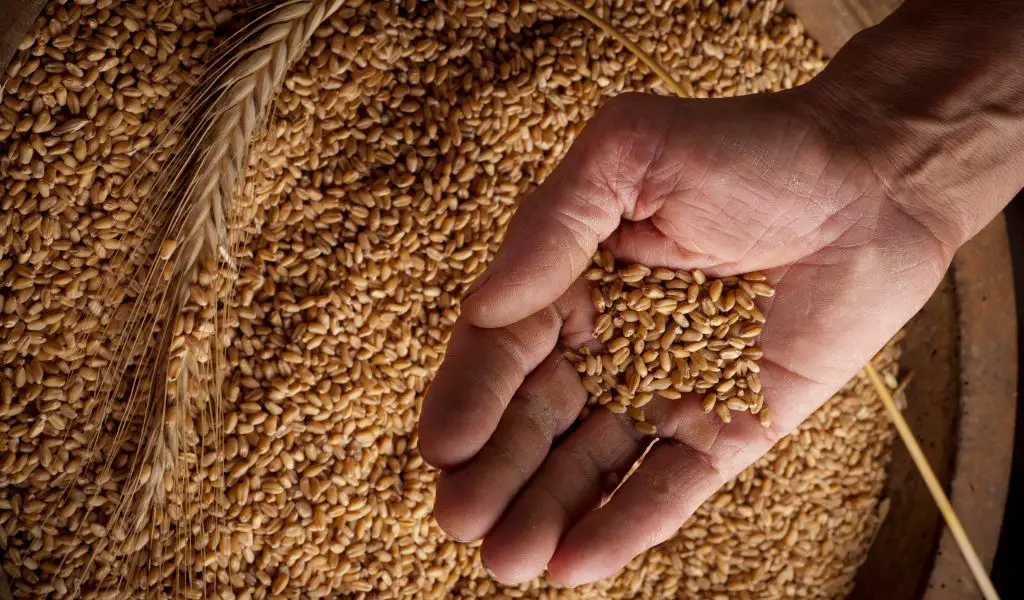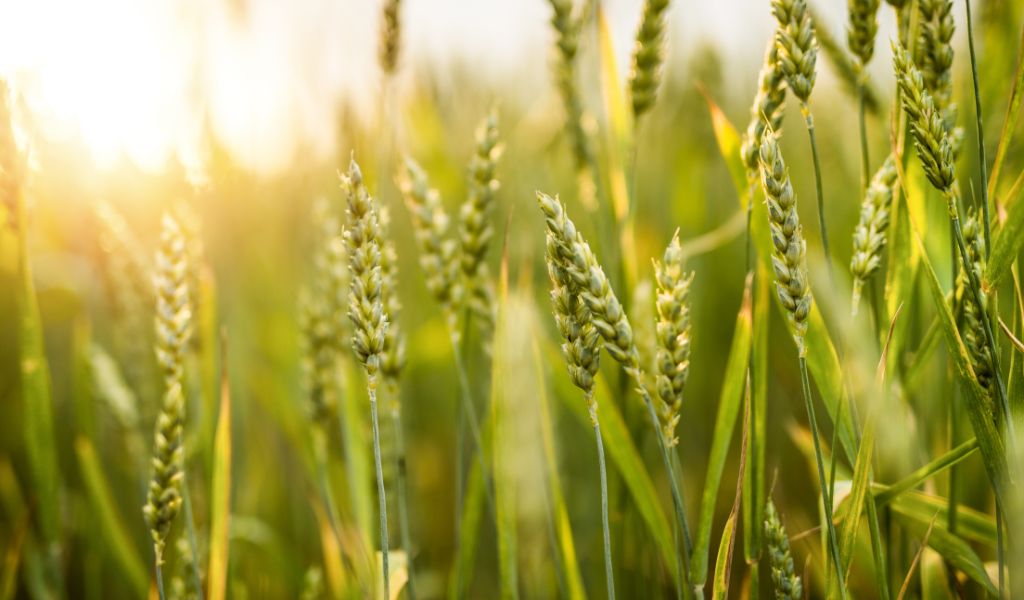The Golden Grains: Can You Grow Store Bought Barley?
Barley is a cereal grain that has been cultivated for centuries.
It’s a versatile crop that can be used for everything from brewing beer to making flour, and it’s also packed with nutrients like fiber, protein, and vitamins B and E.
But the big question on everyone’s mind is: can you grow store bought barley? The answer is yes!
And in this article, we’ll show you how. There are many benefits to growing your own barley.
For starters, it’s cost-effective. Buying barley at the store can get expensive over time, but growing your own supply can save you money in the long run.
Additionally, growing barley allows you to control the quality of your grains. You’ll know exactly what fertilizers and pesticides were used (if any) and can ensure that your grain is organic if that’s important to you.

The Benefits of Growing Your Own Barley
One of the main benefits of growing your own barley is having access to fresh grains whenever you need them.
When you buy grain from a store shelf or online retailer, there’s no way of knowing how long it has been sitting there or how many hands it has passed through before reaching you.
By contrast, homegrown barley ensures greater freshness and nutritional value than its store-bought counterpart since it will be harvested when perfectly ripe.
Additionally, depending on your location and climate conditions (which we’ll discuss below), you may find your homegrown grains have unique flavor profiles that differ from what’s commercially available.
Another perk of growing your own barley is its versatility in culinary applications; from soups to stews and salads or even as an ingredient in bread-making recipes.
So let’s dive deeper into how this golden grain grows best when planted using store-bought seeds!
Understanding Barley
The Basics
Barley is a cereal grain that is grown in many parts of the world. It has been cultivated for thousands of years and is one of the most ancient grains known to man. It is a staple food in many cultures and is used to make bread, porridge, soup, and beer.
One of the great things about barley is its nutritional value. It contains fiber, protein, vitamins (including B vitamins), minerals (such as iron and selenium), and antioxidants that can help protect against chronic diseases such as heart disease, cancer, and diabetes.
Varieties Available in Stores
There are several different types of barley available in stores. The most common ones are hulled barley, pearled barley, quick-cooking barley, and flakes.
Hulled barley has only its outermost hull removed, leaving intact all three layers of bran (the nutrient-rich outer layer), germ (the part that sprouts into a new plant), and endosperm (the starchy center).
This type of barley takes longer to cook but retains more nutrients than other types.
Pearled barley has been polished to remove the bran layer along with some or all of the germ layer.
This results in a faster-cooking grain but with fewer nutrients than hulled barley.
Quick-cooking barley has been partially cooked before it’s packaged to reduce cooking time even further. Barley flakes are made by steaming whole grains then pressing them into flakes.
They can be used as a breakfast cereal or added to baked goods.
Overall, buying store-bought barley gives you access to different varieties with varying nutrient profiles so you can choose which one best suits your needs.
Can You Grow Store Bought Barley?
The answer to this question is a resounding yes! You can absolutely grow store bought barley.
However, growing barley from store-bought seeds can be challenging and requires some careful attention to detail.
But with the right techniques and a bit of patience, it’s definitely possible. One of the biggest challenges you may face when growing store bought barley is ensuring that the seeds are viable.
Many store bought seeds may have been treated with chemicals or processed in a way that makes them difficult to germinate.
However, with proper research and shopping around, you can find high-quality seeds that will successfully grow.
Despite the challenges involved in growing store bought barley, there are also many benefits to doing so. For one thing, you’ll have complete control over how your grains are grown.
This means you can ensure they’re free from any unwanted chemicals or pesticides, resulting in a healthier end product for consumption.
Additionally, growing your own barley is a great way to connect with nature and gain satisfaction from the fruits of your labor.
Challenges of Growing Store Bought Barley
There are several obstacles you may encounter when trying to grow store bought barley.
One major challenge is ensuring that the soil conditions are appropriate for growth. Barley typically requires well-draining soil that’s rich in organic matter and has a slightly acidic pH level.
Another challenge is making sure your plants receive enough water without drowning them or allowing them to dry out completely.
Overwatering or underwatering your plants can lead to stunted growth or even death.
Pests and diseases pose another potential issue when growing barley from store bought seeds.
It’s important to monitor your plants regularly for signs of infestation or illness so you can address any problems early on before they become too severe.

Benefits of Growing Store Bought Barley
Despite these challenges, there are many benefits to growing your own store bought barley.
One major advantage is that you’ll have complete control over the growing process, allowing you to ensure that your grains are free from unwanted chemicals or pesticides.
Growing barley can also be a fun and rewarding experience.
It’s a great way to connect with nature, learn more about agriculture and sustainable living, and gain satisfaction from the fruits of your labor.
Plus, once you’ve successfully grown your own barley, you’ll have a ready supply of delicious and nutritious grains for use in cooking or baking.
While growing store bought barley may present some challenges, it’s definitely possible with the right techniques and attention to detail.
And with so many benefits to gain from doing so, it’s certainly worth considering if you’re interested in sustainable living or simply looking for a fun new hobby.
How to Grow Barley from Store Bought Seeds
Soil Preparation
The first step in growing store bought barley is preparing the soil. Barley requires well-draining soil with a pH range between 6.0 and 7.5.
To achieve this, you can mix sand, compost, or aged manure with your existing soil to improve drainage and nutrient levels. Once you have prepared the soil, turn it over with a garden fork or tiller until it is loose and aerated.
Planting
Once your soil is ready, it’s time to plant your store bought barley seeds. Begin by scattering the seeds evenly over the prepared area, ensuring they are spaced approximately 1 inch apart.
Press the seeds gently into the soil with your fingers or a rake so they are partially buried but still visible above ground level.
Watering and Harvesting Techniques
After planting your barley seeds, water them thoroughly until the soil is moist but not waterlogged. Be sure to keep the soil consistently moist throughout the growing season to ensure optimal growth and yield.
As for harvesting techniques, wait until the barley kernels are fully developed and dry before removing them from their stalks.
This typically occurs around mid-summer depending on when you planted your seeds. When harvesting, cut the stalks about an inch above ground level using a sharp pair of pruning shears or scissors.
Once harvested, separate out any debris or non-kernel materials from your crop before storing in an air-tight container to ensure freshness.
By following these simple steps for growing store bought barley from seed, you can enjoy fresh home-grown grains that are free of pesticides and other harmful chemicals found in commercial products on supermarket shelves!

Tips for Successful Barley Growth
Let the Sun Shine: Importance of Sunlight Exposure
Barley requires a lot of sunlight to grow properly. It is essential to choose a spot in your garden that gets full sunlight. The average requirement for barley is 6-8 hours of direct sunlight per day.
Ensure that your plants are well-lit and in a location where they won’t be blocked by trees or buildings. If you don’t have an area with full sun, you can still grow barley, but it may not reach its full potential.
The pH Factor: Soil pH Levels
The ideal soil pH level for growing barley is between 6 and 7.5. It is essential to test your soil before planting, as the acidity or alkalinity levels will determine whether your barley will grow correctly or not.
You can purchase pH test kits from garden centers or online stores. If you find that your soil’s pH level needs adjusting, add some lime if the soil is too acidic, or sulfur if it’s too alkaline.
Fertilization Tips: Feed Your Plants What They Need
Barley requires nutrient-rich soil to grow properly, so fertilization is crucial for success. Before planting, add compost, aged manure and other organic matter to enrich the soil with nutrients essential for plant growth.
You may consider using nitrogen fertilizers like ammonium nitrate during the first few weeks of growth when leaves are forming rapidly. However, be careful not to over-fertilize as this could lead to excess nitrogen levels in the grains which may cause harm when consumed.
Always follow manufacturer’s instructions on fertilizer use so you don’t burn out your plants’ delicate root systems.
With these tips in mind and some patience and hard work on your part; you’ll soon be enjoying home-grown barley at harvest time!
Common Problems When Growing Barley
The Importance of Identifying Common Problems
Like any crop, store bought barley can be susceptible to certain problems that can hinder its growth and ultimately affect its yield.
By identifying these problems early on, gardeners can take measures to prevent them from worsening and avoid losing their crop altogether.
In this section, we will discuss some of the most common problems when growing store bought barley and address solutions for each.
Pests that Can Attack Barley Plants
Barley plants are vulnerable to a variety of pests that can cause significant damage if left unchecked. The most common pests to look out for include aphids, mites, and root maggots.
These insects feed on the plant’s leaves and stems, which can stunt growth or even kill the plant if left untreated. To prevent these pests from taking over your barley crop, it is important to monitor your plants regularly for signs of infestation.
Early detection is key in controlling these pests.
Some effective control methods include using insecticidal soaps or oils, introducing natural predators like ladybugs or lacewings, or planting companion plants like marigolds or garlic that repel certain insects.
Diseases That Can Affect Barley Growth
Another common problem when growing store bought barley is disease. Fungal diseases like powdery mildew and rust can develop on the leaves of the plant if it is grown in humid conditions or overcrowded areas.
These diseases weaken the plant’s ability to produce healthy grains and reduce its overall yield. To prevent disease from affecting your barley crop, be sure to space out your plants properly so that they have room to breathe.
Avoid overhead watering which promotes moisture retention in foliage and increases humidity levels around your plants which encourage fungal diseases growth. It also helps to remove infected leaves immediately once you spot them and dispose of them properly.
Applying a fungicide spray before you see the first signs of powdery mildew can also be effective in preventing the disease from taking hold.
By being vigilant in monitoring your barley plants, identifying common problems early on, and taking proactive steps to address them, you can ensure a healthy and bountiful crop of store bought barley at harvest time.
Conclusion and final thoughts 💭
Now that we’ve discussed the benefits, challenges, and techniques for growing store bought barley, it’s clear that this is a viable option for those looking to experiment with home gardening.
Not only does growing your own barley provide you with a fresh supply of high-quality grain, but it also allows you to control the growing conditions and avoid any harmful chemicals or additives that may be present in store-bought options.
If you’re considering giving this a try, be sure to follow our tips for successful growth and problem-solving.
Remember that patience and persistence are key when it comes to cultivating any crop – don’t get discouraged if your first attempts aren’t perfect.
Growing your own barley can be a rewarding experience that not only provides practical benefits but also connects you more deeply with the natural world around us.
So why not give it a try? Who knows – you may just discover a new passion for gardening and self-sufficiency!




